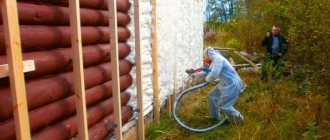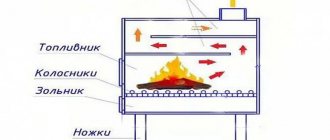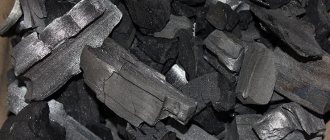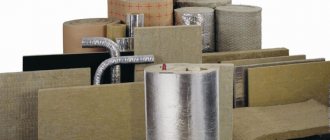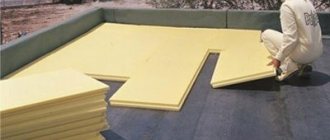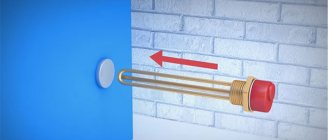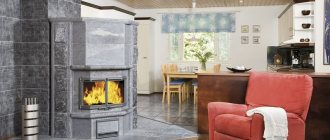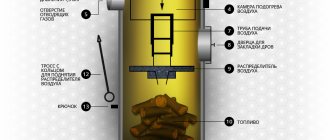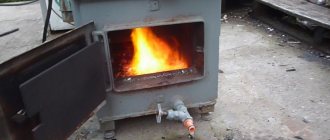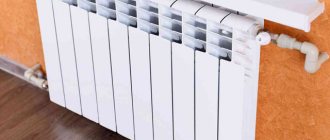When building low-rise housing, brickwork of 1.5 or 2 or 2.5 bricks is used:
- solid single-layer and solid two-layer;
- lightweight two-layer, also known as well.
In any case, polyurethane foam will be useful for increasing the heat transfer resistance of the walls of the house. In other words, it will be cool in the summer and warm in the winter; in addition, the use of polyurethane foam between the walls reduces the consumption of building materials and reduces the load on the foundation and floors.
The photo shows the installation and components for filling the interwall space with polyurethane foam.
Let's take a closer look at how this works. But first, a little theory to understand why polyurethane foam is needed in the space between walls . If theory is not required, then go straight to the question of how to fill the walls with polyurethane foam.
Insulation of walls using polyurethane foam
Pouring polyurethane foam into interwall voids is used to insulate and strengthen the walls of a house under construction or an already in use building. When building houses, brickwork of 1.5 or 2 bricks is used. According to SNiP II-3-79, in order to provide adequate protection from the cold, the wall thickness must be at least 1.2 meters.
It is impractical to use such a number of bricks due to the load on the foundation and the complexity of installation, so the walls are made of two layers. They erect an internal and external one, leaving a space of 50 centimeters between them for free air circulation. This helps retain heat and prevent condensation. But this is not enough for complete insulation. It is difficult to thermally insulate the space between walls using rolled or soft materials. The method of filling voids with polyurethane foam allows you to evenly fill all the gaps inside and between walls.
How does the work happen?
Filling of polyurethane foam is carried out through the lower holes into which the material is supplied under pressure. As the voids fill and the foam hardens, the craftsmen move to the next level. The work continues until the specialists reach the ceiling openings.
Filling with polyurethane foam, in turn, provides a high level of protection against heat loss and cold ingress. Polyurethane foam is able to fill the smallest cracks, making the insulation absolutely airtight.
In addition, we provide waterproofing services for buildings.
12
Years of operation of the company
In the field of insulation and waterproofing
1920
Objects of varying sizes and complexity
190000 m2
Insulated and waterproofed area
4
Professional teams
99%
Satisfied clients
Features of using polyurethane foam for filling
After mixing components A and B, the polyurethane foam for pouring is a plastic mixture. After hardening, it becomes dense and rigid and has a cellular structure. The material is light and hard, does not deform or break.
The thermal conductivity coefficient of polyurethane foam is one of the lowest - 0.022 W/m·K. Therefore, even a small layer of a few centimeters is enough to protect the structure from the cold. Polyurethane foam has high adhesion and is attached to metal, glass, wood, and concrete. Penetrates into pores and cracks, fills them and maintains a uniform structure for 30 years.
Filling interwall voids with polyurethane foam
has been providing its professional services for filling voids, cavities and walls for a long time.
In our work we use high-quality polyurethane foam, which has fairly high heat-saving characteristics. We pour polyurethane foam into the cavities in the walls, between frame elements, and into the voids between slabs. This technology allows to reduce heat loss, reduce noise levels in buildings, and also protect load-bearing walls. We have been working in this field for more than 10 years, so we know exactly how to do the job at the proper level. The company employs highly qualified specialists who are ready to take on a project of any complexity. We work with both individuals and legal entities. Everyone receives an individual approach and high level of service.
Pouring equipment
To fill polyurethane foam walls, pouring complexes are used. Such equipment allows you to accurately dose the components to produce polyurethane foam, mix them until they are homogeneous, and pour them into the space between the walls. Installations come in high pressure (more than 100 atmospheres) and low pressure (4–10 atmospheres).
In high-pressure devices, mixing of components occurs due to penetration into each other. In low-pressure apparatuses, materials are mixed with a special mixer. Air does not participate in this process, because its bubbles lead to the formation of voids inside the matter. The polyurethane foam is applied to the surface using a spray gun.
Low pressure units usually weigh up to 100 kilograms. This makes it easy to move them in space when pouring polyurethane foam into the walls. They are easy to use and can be used at home. Disadvantages include the short length of spray hoses and higher material consumption compared to high-pressure installations.
The performance of high-pressure units allows you to fill large spaces, use hoses up to 120 meters, and avoid the formation of suspension near the spraying site. The disadvantages include the high cost of the equipment, weight more than 100 kg, difficulty of use - a specialist is required to work with the installation.
Advantages of polyurethane foam thermal insulation
Insulation by pouring polyurethane foam is:
- Safely. Hardened polyurethane foam does not emit toxic substances, does not support combustion, and is not attractive to fungi, insects, and rodents;
- Profitable. Lightweight insulation does not weigh down the structure and allows the use of lightweight types of foundations and interfloor ceilings;
- Reliable. Continuous filling provides a monolithic layer of heat insulation, eliminating the appearance of cold bridges.
As a bonus for insulating the house, the owner receives additional sound insulation, because polyurethane foam has the highest sound absorption coefficient among all insulation materials.
Examples of high pressure installations:
- Polymer complex PK-60 - capacity up to 60 l/min, self-cleaning filling head, asynchronous gear motor, industrial controller with touch screen;
- Graco HGR - productivity up to 20 kg/min, hydraulic drive, filling controller, automatic determination of the accuracy of the component ratio. Watch the video to see how the Graco installation works using the example of Khimtrust SKZ-20 interwall fill:
- Hennecke - productivity up to 35 kg/min, hydraulic drive, built-in containers of 250 liters, filling head, automatic control of dosing accuracy.
What will the cost of such insulation depend on?
The cost of insulating a building with polyurethane foam foam depends on how much area needs to be covered with the material and in what quantity. It is necessary to take into account the thickness of the walls and the material of their production. For example, concrete cools faster than a wooden surface, so a higher consumption of polyurethane foam must be calculated for it. You need to calculate the approximate costs of the equipment that will be required during the work.
If you plan to carry out the work yourself, the cost of the entire procedure as a whole will be cheaper. When hiring professionals, the work will be done much faster and with better quality, but the cost will be several times higher, since this type of service is not cheap today.
PPU filling technology
There are two approaches for thermal insulation of hollow walls by pouring polyurethane foam. If the building is at the construction stage, the material is poured from above between the outer and inner walls. To do this, choose polyurethane foam with a high start time - 30–45 seconds. For example, “Khimtrust SKZ-30 (slow).” The substance manages to sink down, and then begins to expand, filling all the voids and cracks.
How to fill with polyurethane foam if the building is already in use? To insulate a built house, polyurethane foam is poured between the wall and the cladding from the outside. Typically, a material with a low start time is used - 10–20 seconds. For example, Khimtrust SKZ-20. Holes with a diameter of 12–14 millimeters are drilled in the external wall of the house at the depth of the brickwork. The distance between the holes is 50–100 centimeters. They are placed in a checkerboard pattern. You need to fill the holes with polyurethane foam from the bottom up. This will allow the material to be distributed evenly, without voids inside. After filling, the holes must be closed with wooden dowels to prevent the material from leaking out. Polyurethane foam hardens in 1–2 minutes and forms a dense moisture-proof layer between the inner wall and the cladding of the building.
Why is polyurethane foam the best among insulation materials?
What is this insulation? This is, in fact, foam plastic familiar to us from childhood, or rather one of its varieties. After hardening, polyurethane foam has a cellular structure, and inside each cell there is a gas bubble.
At the moment, polyurethane foam is significantly superior to its competitors in thermal protective properties, and in ease of use, as well. For example, to provide a level of thermal protection that can be provided by a five-centimeter thick layer of this insulation, you will need a layer eight centimeters thick of expanded polystyrene, nine centimeters of mineral wool and ten centimeters of polystyrene foam.
As a result, we get a lightweight, effective and fairly easy-to-use thermal insulator that can significantly increase the thermal protection of your home without complex work and serious material and labor costs. And in closed volumes, such as the voids in such walls, such insulation will serve for a very, very long time. In general, we can say that for insulation of inter-wall cavities, polyurethane foam is the optimal, if not ideal, choice.
Types and areas of use of the material
Polyurethane foam is a popular material that has proven itself in various fields of production and construction. Retains heat well and has a list of advantages:
- A light weight;
- Low thermal conductivity;
- Does not require fastening elements;
- Insulates sound and heat;
- Does not conduct moisture;
- Protects metal structures from rust;
- Inert, prevents the development of mold and bacteria;
Negative properties of polyurethane foam:
- Requires air ventilation to prevent condensation.
- Reacts poorly to ultraviolet radiation and loses its properties. Needs additional cover.
Types of polyurethane foam, load and density:
| Species name | Load kg/cm2 | Density kg/m3 |
| Standard | 60-100 | — |
| Hard | 80-120 | 30-80 |
| Soft | 60-120 | 5-30 |
| Increased rigidity | 60-100 | More than 80 |
| Highly elastic | 100-120 | — |
Closed cell polyurethane foam is a hard sponge with isolated pores filled with gas. Does not allow air and moisture to pass through, retains heat well.
With an open cell - they have a low density of 8-20 kg/m3, allow water and air to pass through, the foam is plastic and soft.
Foam release forms:
- Sheet, in the shape of a rectangle, the thickness of the product varies from 5.0 to 1000 mm. Two types: hard or soft. Individual cutting of the finished product is possible.
- In the form of rolls or reels. Various widths, thickness ranges from 2.0 to 30 mm. May have a synthetic or fabric lining.
- Block - produced in rectangular or cubic shape, hard, there is a crust that is removed during the processing of the material.
- Acoustic – relief tiles of various colors, shapes and sizes. With high sound insulation capabilities.
- Contour – parts of a curved shape, cut out according to the drawing. Designed for filling seats, backs, etc.
- Liquid polyurethane foam – allows you to seal cracks and hollow spaces.
Forms of polyurethane foam
The areas of application of polyurethane foam are extensive and multifaceted. It is actively used in the production of furniture, cars, bedding (pillows, mattresses, blankets), sponges, washcloths. It brings great benefits in the field of construction due to its beneficial properties. Areas in which foam rubber is involved:
- Production of household goods and household appliances;
- Fabric, footwear, furniture industry;
- When insulating pipelines;
- Acoustic insulation;
- Medicine;
- Space industry;
- Cladding of walls, loggias, building structures.
It is used as packaging for fragile, easily breakable items to ensure smooth transportation. Polyurethane foam is used to make elegant interior decor, ventilation filters, shoe insoles and soles. The service life exceeds 40 years, has no restrictions, is hardy in unfavorable environments, and can withstand a wide range of temperature changes. Chemically resistant. Small consumption of the mixture due to the increase in volume allows you to save money without compromising on quality. A promising, safe material, widely used in many areas.
Precautions when producing polyurethane foam
Polyurethane foams are harmless and non-toxic, but it is important to know that when they burn, hydrogen cyanide is released, which can cause suffocation and poisoning. It doesn’t matter whether polyurethane foam is produced by pouring or spraying, it is necessary to exclude the presence of open flame sources.
Mandatory security measures:
- Workers must have special clothing and glasses that will protect against splashes on open areas of the body and eyes;
- Respiratory protection with a respirator or helmet mask with air supply;
- Spraying of polyurethane foam is prohibited in the presence of strangers;
- Do not start work on faulty equipment;
- All employees must be given safety training;
- Cover spilled substances with damp sawdust.
